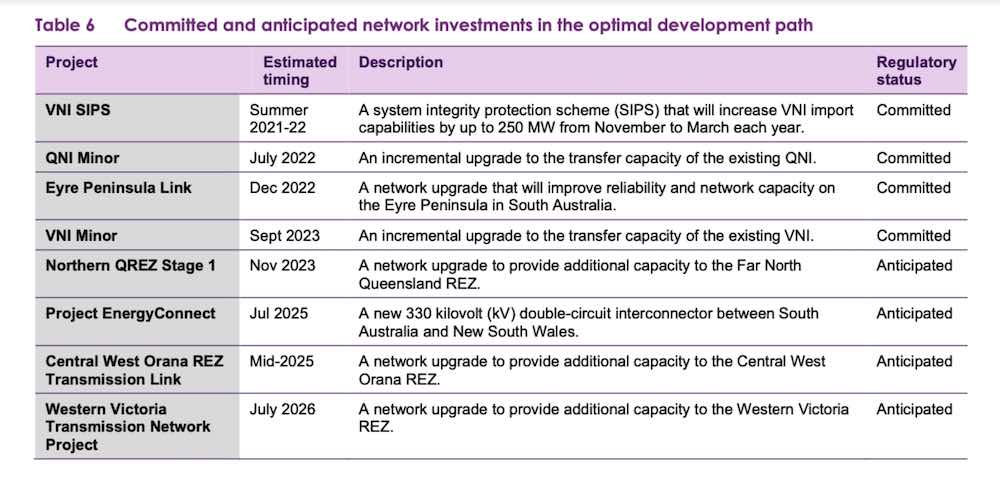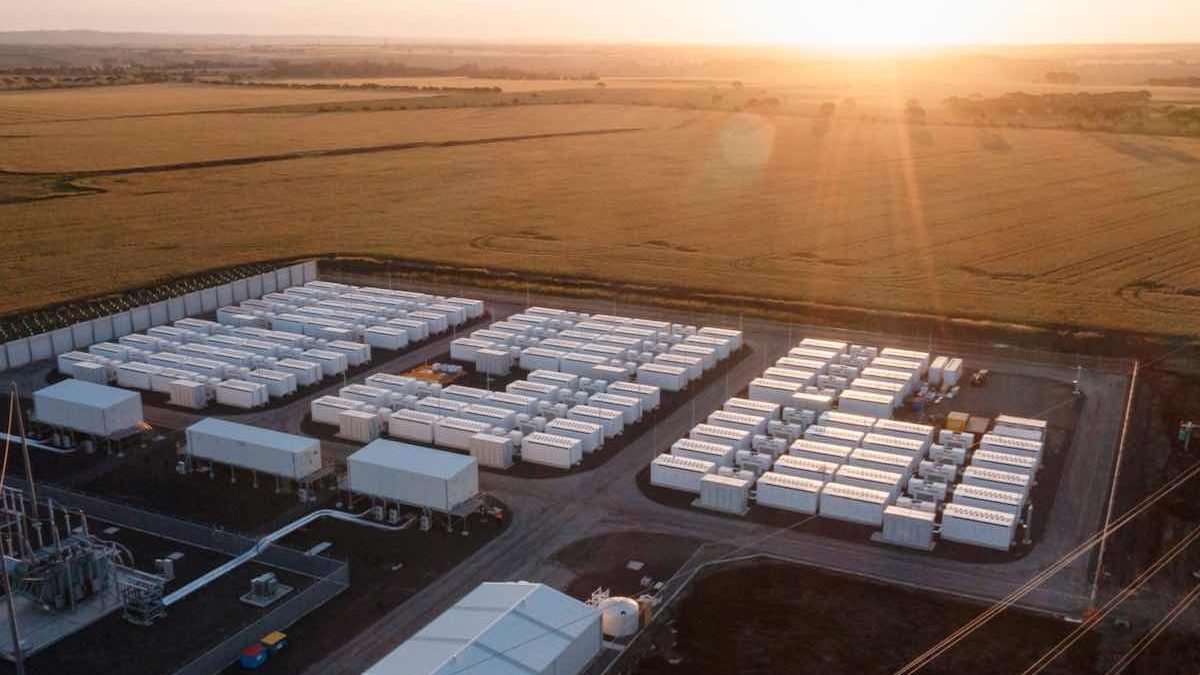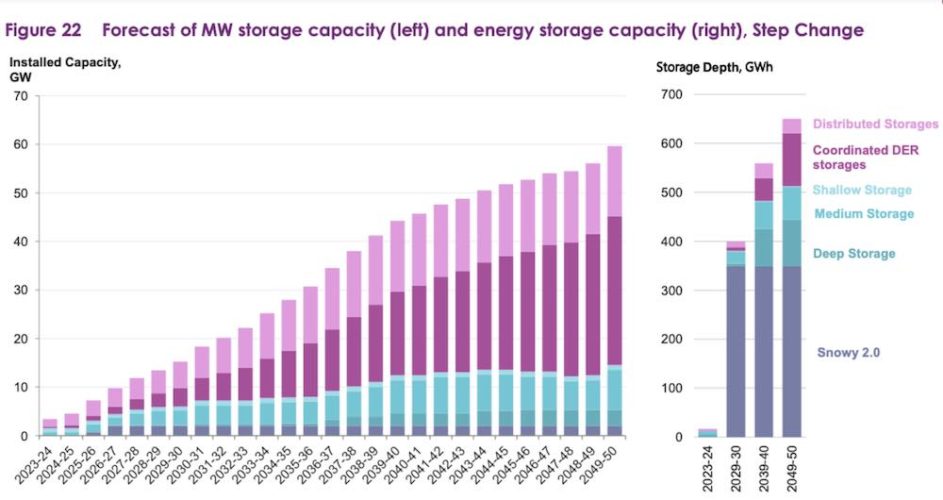Australia’s electricity transition is accelerating at an unprecedented pace, and the new planning blueprint from the Australian Energy Market Operator now assumes that coal closures will occur at three times the expected rate, and all the country’s brown coal generators could be gone by 2032.
The new assumptions are made in AEMO’s updated “Step Change” scenario, which was the “out-there” scenario in the first edition of its Integrated System Plan in 2020, but is now considered to be the most likely outcome in the 2022 edition and will be the new “core” or central scenario for planning purposes.
The Step Change scenario assumes that 14GW of coal capacity will retire by 2030, because the generators are finding it increasingly difficult to compete against rooftop solar and large scale renewables, and because they are getting older and more costly to maintain.
That is nearly three times the 5GW of retirements that are currently scheduled. In its place, the amount of wind and solar needs to treble by 2030, rooftop solar will double, and the draft ISP lays out a plan of how to get there, with a particular emphasis on new transmission and storage.

The draft 2022 ISP is a breath-taking document because it highlights the breadth and speed of the transition that is taking place, and the scale and urgency of what needs to be done to ensure it continues. But the document will also be highly influential on government, regulator and investor thinking.
The remarkable and – for those concerned about climate change – uplifting aspect of the draft ISP is that the coal exit could be even more dramatic. For the first time, AEMO has also introduced a scenario compatible with the 1.5°C Paris climate goal, and the results are – to use its own description – monumental.
The modelling for “Hydrogen Superpower” suggests all the coal generators in Australia’s main grid could be closed by 2032, from which time it will be largely powered by wind, solar and vast amounts of storage.

“Australia’s National Electricity Market (NEM) is supporting a once-in-a-century transformation in the way society considers and consumes energy,” the document says.
“(It is) drawing on electricity in place of much of the oil and gas for industry and homes, replacing legacy assets with low-cost renewables, adding batteries and other new forms of firming capacity, and reconfiguring the grid to support two-way energy flow to new power sources in new locations.
“It is doing so at world-leading pace, while continuing to provide reliable, secure and affordable electricity to consumers.”
The forecasts for coal closures have significant political implications, because both major parties are predicting no early coal closures, even though the Coalition assumes a 69 per cent share of renewables by 2030, and Labor assumes an 82 per cent renewable share by 2030.

AEMO’s Step Change scenario, developed after 18 months of detailed consultation with more than 200 energy experts, assumes a 79 per cent share for renewables by 2030.
More than half of the experts consider this to be the “most likely” scenario, which means that AEMO – and other institutions such as the Australian Energy Regulator, when ruling on funding applications for new poles and wires – will base their decisions around it.
But the hydrogen superpower cannot be ruled out. Transmission companies such as Transgrid have already produced scenarios showing that more than 90 per cent renewables is possible by 2030, which is somewhere between Step Change and Hydrogen Superpower.
As AEMO writes, the scale of development in this Hydrogen Superpower scenario “can only be described as monumental.”
It would require Australia to become a renewable energy superpower with an additional 256GW of wind and approximately 300GW of solar – 37 times its current capacity of VRE (variable renewable energy).
For now, however, AEMO is settling on Step Change as its core planning scenario, and has outlined its “Optimal Development Plan” (ODP), to deal with the likely early coal closures. Most notably, this suggests quick and early work on important new links such as Hume and VNI west in Victoria.
“The Step Change scenario forecasts a rapid transformation in Australia’s National Electricity Market, consisting of a significant investment in renewable generation, storage and firming generation as coal plants exit, and improvements to transmission,” AEMO CEO Daniel Westerman says.
“In this scenario, the NEM will operate without coal generation by 2043. This requires a substantial increase in battery and pumped-hydro storage, hydrogen or gas-fired generation for peak demand, all complemented by a market that incentivises energy users to adjust demand based on system conditions.
“This transformation will efficiently deliver secure, reliable and affordable electricity while substantially contributing to national emissions objectives,” he said.
And it will deliver $29 billion in net market benefits, returning 2.5 times the investment value. AEMO doesn’t specify the potential savings for individual households, but they are likely to be substantial.
Labor can be expected to embrace the document, because it largely conforms to their own modelling. The current Coalition government, which dismissed the previous version as a plan for “lines to nowhere” (Angus Taylor’s comment), will be urged to take this more seriously.
The draft ISP doesn’t hold out much hope for those touting a “gas-led” recovery. Yes, gas will play a role, and around 9GW of gas generation may well be needed. But these will be limited to fast-start generators that will be rarely used. There won’t be much of a role for “mid-merit” or intermediate gas generators.
Most of the “dispatchable” generation will come in various forms of storage, with about 45GW/620 GWh of dispatchable storage capacity, 7GW of existing dispatchable hydro and the 9GW of gas-fired generation. That is in the “step change” plan.
NSW will require 38GW of new wind and solar by 2050, and it already has a plan to build 12GW by 2030. Queensland will require even more, 47GW of new wind and solar by 2050, South Australia would built an extra 15GW (six times its current capacity), and Victoria 23GW.
Tasmania is expected to add 2.5W, although AEMO doesn’t assume any offshore wind farms, such as the 1GW Alinta project proposed for the Portland smelter, because these are at such early stages.
Households will play a critical role, not just in the uptake of electric appliances and kicking gas out of the home, but also through the purchase of EVs and a five-fold increase in rooftop solar PV capacity to more than 75GW by 2050, and their participation in “virtual power plants” and demand response.
 To make sure the grid is ready to support this extraordinary transition, AEMO has proposed a 30-year ‘optimal development path’ which focuses on the 10,000 kilometres of new transmission that will be needed.
To make sure the grid is ready to support this extraordinary transition, AEMO has proposed a 30-year ‘optimal development path’ which focuses on the 10,000 kilometres of new transmission that will be needed.
Some are already underway, but AEMO is also anxious that serious work commences on other projects such as VNI West in Victoria, the Hume link from Snowy, and the Marinus links from Tasmania. It also talks of the importance of social licence.
“The land needed for major VRE, storage and transmission projects to realise these goals is unprecedented,” the document notes.
“Early community engagement will be needed to ensure investments have an appropriate social licence. The new REZ Design Report framework is a start, but proactive engagement and integrated land-use planning is also needed at a jurisdictional level.”
And if those new transmission lines face insurmountable hurdles?
“In some cases, this may lead to alternative developments that reduce the need for new transmission, including batteries, gas-fired generation and offshore wind developments that connect to the existing network easements.” (See graph above).
Note: Tune in to the latest edition of the Energy Insiders Podcast which features AEMO’s Alex Wonhas and Nicola Falcon.
See also:
“Monumental:” Why AEMO’s stunning Hydrogen Superpower scenario can’t be ruled out
More than 20 per cent of solar may be curtailed in Australia’s renewables grid. Does it matter?
“Baseload” generators have had their day, and won’t be needed in a modern grid
Good, independent journalism takes time and money. But small independent media sites like RenewEconomy have been excluded from the millions of dollars being handed out to big media companies from the social media giants. To enable us to continue to hold governments and big business to account on climate and the renewable energy transition, and to help us highlight the extraordinary developments in technology and projects that are taking place, you can make a voluntary donation here to help ensure we can continue to offer the service free of charge and to as wide an audience as possible. Thank you for your support.










